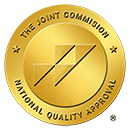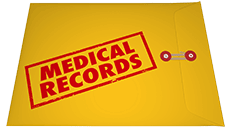My Kid Has a Broken Bone – Now What?
Broken bones are a natural part of childhood, with many children suffering fractures every day. Sometimes rough play or falls from height are to blame, but it’s also possible for children to break bones simply by tripping while running. Broken bones are the fourth most common injury among those under six.
Arms are common fracture areas, either in the upper arm, the forearm or the wrist. We all try to protect ourselves by instinctively putting out our arms to break a fall.
There are various types of breaks and fractures, so here’s a rundown on what to look out for and what to do when you suspect a broken bone.
Types of Fracture
Not all breaks are clean, and neither do they always completely snap bones:
- Greenstick Fractures — the bone is bent and fractured on one side only. It’s a little like a green stick with plenty of flexibility that only cracks on one side when you bend it.
- Torus or Buckle Fractures — the bone isn’t actually broken through, but is damaged and weakened by being twisted and buckled in an accident.
- Bend Fractures — bones that have been bent but not broken. Young bones are more pliable than adult bones so this is common in young children.
- Complete Fractures — bones that have broken through completely.
- Non-displaced Fractures — where the bone is broken through but the broken ends are still aligned properly.
- Displaced Fractures — the ends of a broken bone have been pushed out of alignment.
- Open or Compound Fractures — the bone is protruding through the skin.
- Closed Fractures — the skin is unbroken around the fracture site.
Growth Plate Damage Following a Fracture
Another type of break affects the growth plate. Here, the plates responsible for growth and located at the ends of bones are damaged, which may affect future growth. Because bones grow slowly, any damage to the growth plates is hard to detect and may not become apparent for a year or more. Pediatric monitoring for up to 18 months is necessary to make sure the bones are growing properly and, if they’re not, some remedial surgery may be needed. Allowing the damage to continue can result in bones growing at the wrong angle, or growing more slowly than others in the body.
How to Identify a Fracture
With some fractures, the affected limb isn’t always immobilized so you can’t always go on whether the child can move it. Here are some other tell tale signs:
- You hear a grinding noise or a snap when the child is injured.
- The injured area looks deformed or swollen.
- The child is clearly in pain and unwilling to move or have you touch the area.
Dos and Don’t For Broken Bones
If you suspect a fractured bone, try not to move the child. Call for emergency help by phoning 911. Try to keep the child still and stable. They’re bound to be in pain and frightened, so try to stay calm and reassure them that all will be well.
If any bones are protruding, don’t try to push them back in. In fact, you shouldn’t try to move broken bones by yourself at all, nor attempt to remove clothing. Clothes may need to be cut off, but injured limbs must not be moved to make this easier.
Treating Fractures
Different fractures are treated in different ways, so the ER’s first step is to find out what happened to the bone. This is achieved through X-Ray, CT or MRI scanning, or a bone scan. Once doctors know what type of fracture they have, they can treat it correctly. It may need:
- A brace or cast — to keep the bone stable while it heals, preventing further damage.
- Medication — this may be for pain relief alone, or depending on how the fracture happened the child may also need a tetanus shot or a course of antibiotics to ward off infection.
- Surgery — in more serious fractures, surgery may be needed to realign bones which are out of place, or to insert pins or plates for added stability.
- Traction — helps pull misaligned bones back into place and is most often used in leg fractures.
Care at Home
On return from hospital, your child will need rest and plenty of sleep to help them heal. An ice pack can help with pain and swelling, and devices to assist with walking can help them build up strength or move around without putting weight on the injured limb. Later, physical therapy can help them regain movement and normal strength.
You should consult your doctor without delay if you notice a strange smell coming from under the cast, your child develops a fever or complains the cast or brace is too tight.
Most fractures, while traumatic and painful at the time, heal well, with children soon up and running around again.




